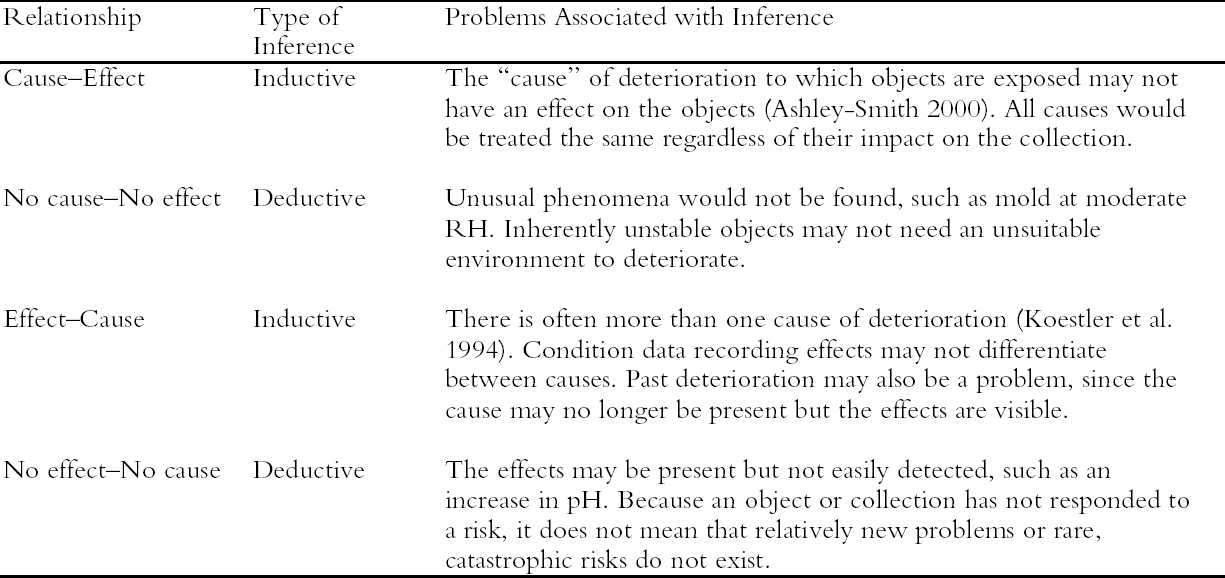AN INTEGRATED APPROACH TO RISK ASSESSMENTS AND CONDITION SURVEYSJOEL TAYLOR
3 THE CAUSE-EFFECT RELATIONSHIPCause-effect relationships in complex museum environments are by no means direct (Koestler et al. 1994; Ashley-Smith 1999, 2000). There are object-environment interactions that may not be immediately visible but are nevertheless destructive, such as lowering of pH and different reaction rates between objects. Assessing effects does not necessarily indicate the risks a collection faces. Equally, assessing exposure does not necessarily indicate consequence. Condition is difficult to diagnose, and risks may be benign, so interaction between risks and condition is difficult to establish. The presence, or absence, of causes and effects does not tell the whole story. Using one perspective will produce different kinds of problems when assessing risk or consequence. Kinds of inference that can be used to characterize a cause-effect relationship for risk assessments and condition surveys, and their potential difficulties, are presented in table 1. The behavior of objects within given environments does not always conform to the theoretical framework (Padfield 1994; Ashley-Smith 2000). There are various examples of objects and collections that have deteriorated in an unpredictable way
Risk and condition can be related to these concepts in terms of expectation and observation. Risk assessment is forecasting the probability of events through the use of an existing theoretical framework of damage to objects—the expectation of damage. Condition surveys collect visible data to determine problems relating to collections—the observation of damage. Perceptions in these assessments are based on our knowledge of deterioration. The experience built up over time sharpens our perception, but it can also mean that the information perceived is based on rules created from past experiences. |
